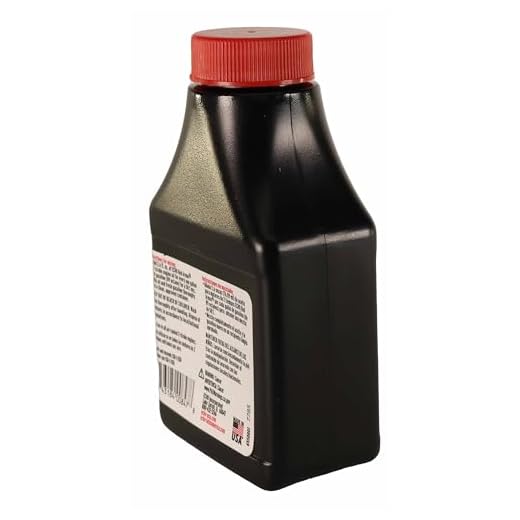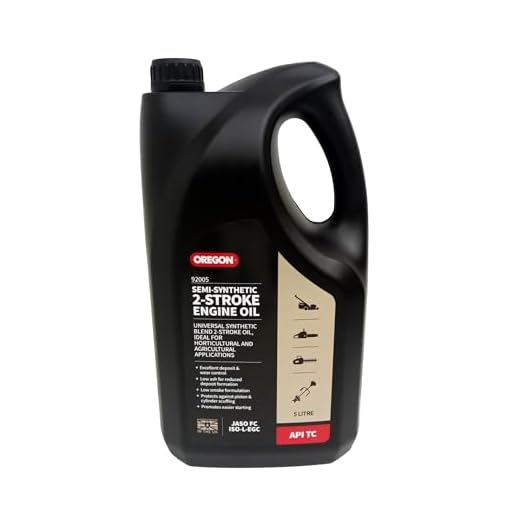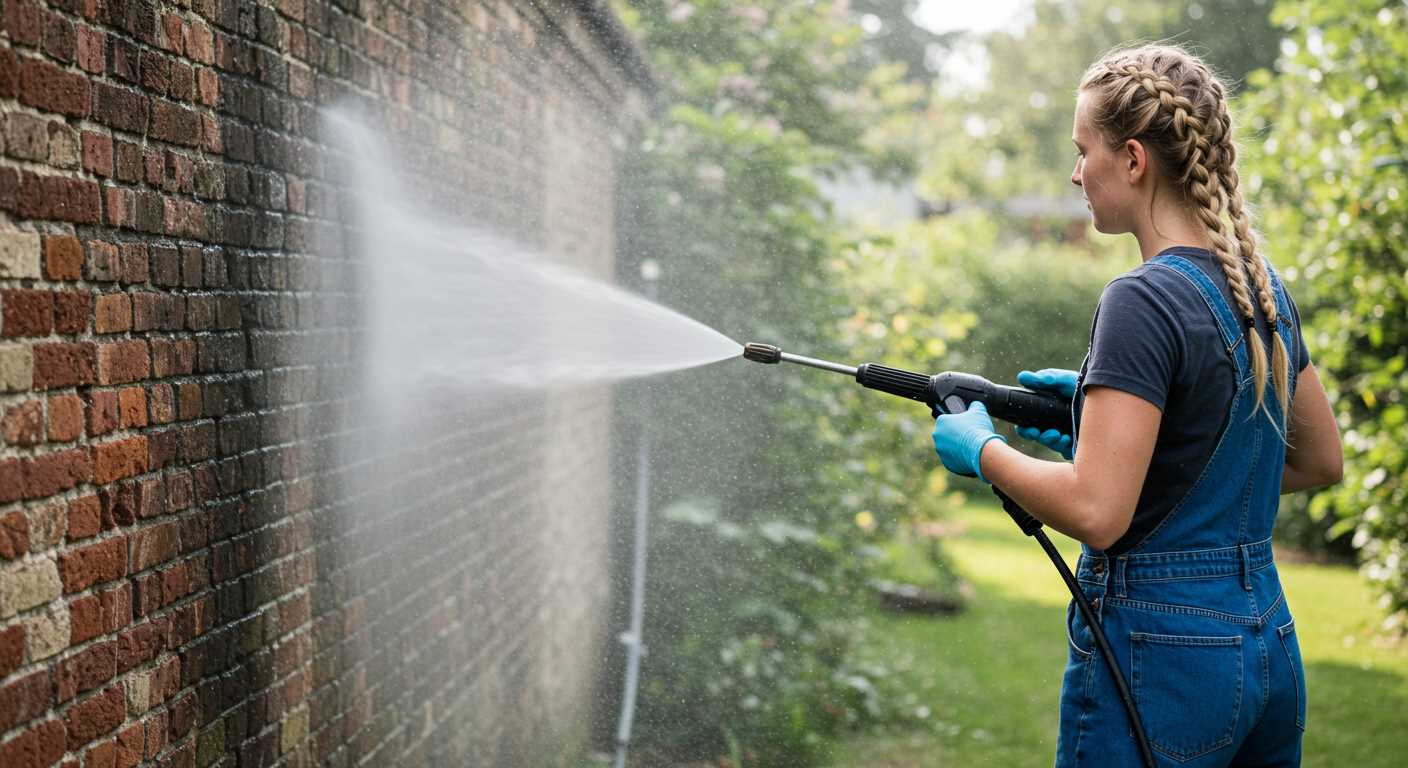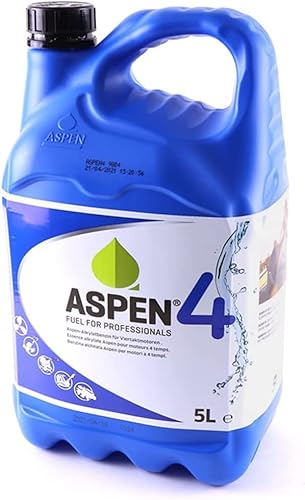



The straightforward answer is no; a gasoline-powered cleaning apparatus does not require a fuel mixture. These units are designed to run on pure unleaded fuel. Using a fuel mixture could lead to significant operational issues and may void the warranty.
When I was working as a consultant for a leading manufacturer in the cleaning industry, I encountered numerous customers who were confused about the right fuel type for their machines. It’s crucial to refer to the manufacturer’s guidelines for the specifics, as they provide information tailored to your model’s requirements.
Many users mistakenly believe that a mixture enhances engine performance or longevity. In reality, it could result in clogged fuel passages and increased emissions. For optimal functionality, always use clean, uncontaminated fuel and ensure your cleaning device is properly serviced according to its maintenance schedule.
Understanding the Fuel Requirements of Petrol Pressure Washers

For optimal performance, a standard four-stroke engine operates efficiently on straight unleaded fuel. Mixing oils with gasoline is not necessary for these machines. Ensure you use fuel with an octane rating of at least 87 to avoid knocking and to promote engine longevity.
Fuel Quality and Maintenance

Utilise fresh fuel, ideally less than 30 days old. Older fuel can lead to starting issues and reduced efficiency. Storing the machine with fuel inside without stabiliser can result in gumming up and fuel degradation.
Always refer to the manufacturer’s specifications for fuel recommendations specific to your model. Using low-quality or contaminated fuel can cause significant damage and inefficiencies.
Common Mistakes to Avoid
Avoid mixing oil with petrol. This practice can lead to engine failure. Also, never run the engine on fuel containing ethanol over 10% because it can cause serious issues like corrosion and poor performance.
Here’s a simple table summarising the key fuel guidelines:
| Fuel Type | Recommendation |
|---|---|
| Unleaded fuel | Regular grade, minimum 87 octane |
| Ethanol content | No more than 10% |
| Oil mixing | Do not mix, use straight fuel only |
| Fuel freshness | Use within 30 days |
By adhering to these guidelines, you will enhance the reliability and efficiency of your cleaning equipment, ultimately prolonging its life and performance. Regular maintenance, combined with proper fuel choices, sets the foundation for effective operation. Keep your engine happy!
Differences between two-stroke and four-stroke engines in cleaners
When selecting a cleaning device, it’s vital to recognise the distinct characteristics of two-stroke and four-stroke engines. Two-stroke variants are generally lighter and more compact. They deliver power with every crankshaft revolution, offering a higher power-to-weight ratio. This design is beneficial for tasks requiring portability. However, they produce higher emissions and require a specific fuel mixture, which can be an inconvenience during operation.
Four-stroke models, on the other hand, operate with a more complex mechanism, involving a dedicated stroke for intake, compression, power, and exhaust. This results in smoother operation and significantly lower emissions. The fuel system remains straightforward, relying on straight fuel without additional mix. Although generally heavier and larger, these models have greater durability and longevity, making them suitable for extended use.
Performance and Maintenance Considerations
In terms of performance, cleaner engines excel in their unique ways. The two-stroke variations deliver quick bursts of power, making them ideal for short, intensive tasks. Nevertheless, this comes at the cost of increased wear and tear, requiring more frequent maintenance and oil changes. In contrast, four-stroke versions are designed for longevity, requiring less frequent maintenance, contributing to higher operational efficiency over time.
Noise and Vibration Levels

Noise and vibration levels vary between the two. Two-stroke units tend to operate noisily, leading to potential discomfort during use. This can be mitigated with the right ear protection. Four-stroke alternatives typically provide a quieter, more user-friendly experience, making them preferable for residential areas or prolonged use in noise-sensitive environments.
Identifying correct fuel types for your specific model

Check the owner’s manual for your specific model to determine the right fuel specifications. Each brand and model can have unique requirements, such as octane rating or additives that optimise performance.
For most devices, standard unleaded fuel is adequate. However, some high-performance models may recommend a premium grade to enhance efficiency and reduce emissions. Always ensure that the fuel is fresh, as fuel older than 30 days can lose effectiveness and cause starting issues.
When operating machines with two-stroke engines, mixing fuel with oil is mandatory. The ratio is typically 50:1, but it’s vital to confirm this in the manual, since variations exist among manufacturers. Mixing fuel incorrectly can lead to engine damage or poor performance.
Keep an eye out for specific labels and markings on the equipment. Identifying these can simplify fuel selection, as some machines might require specific fuel blends or additives. If uncertain about the appropriate type, consult with the retailer or manufacturer for tailored recommendations.
Regularly check fuel quality before each use. Dirty or contaminated fuel can lead to clogs and malfunctions. Additionally, consider using fuel stabilisers, especially for seasonal storage, to maintain fuel integrity and ensure reliable performance when you resume use.
If you encounter difficulties starting the equipment, it may be beneficial to check the fuel type and ensure proper mixture ratios. Fuel-related issues often account for common performance complaints, so verifying this step can save time and frustration.
How to mix petrol and oil for two-stroke engines correctly
For optimal performance, I recommend a mixture ratio of 50:1 for most two-stroke engines, which translates to 50 parts fuel to 1 part oil. To achieve this, measure out 1 litre of two-stroke oil and mix it with 50 litres of unleaded fuel.
Always use a clean container for mixing to prevent contamination. Stir the mixture thoroughly until it’s uniform. Using a fuel mixing bottle can be advantageous, as many come with markings that indicate the correct amount of oil for various fuel quantities.
It’s crucial to use only high-quality oil that is specifically formulated for two-stroke engines. Avoid using automotive engine oil, as it may not burn cleanly and could damage the engine over time. Read the manufacturer’s recommendations on oil type to ensure compatibility.
After mixing, it’s wise to use the fuel within 30 days to maintain its effectiveness. Extended storage can lead to degradation and may cause starting issues or even damage to the engine.
Always label your mixed fuel container to prevent accidental use in four-stroke engines, which require a different fuel type. Properly disposing of any unused mixed fuel is important; do not pour it down drains or onto the ground. Always follow local regulations for hazardous waste disposal.
Signs that your high-pressure cleaning device requires a fuel mixture
Check for the following indicators to determine if your equipment relies on a fuel blend:
- Engine type: If you have a two-stroke engine, a mix of oil and unleaded fuel is necessary for lubrication.
- Excessive smoke: Dark or excessive smoke during operation suggests inadequate lubrication, indicating a possible need for a fuel mix.
- Start-up issues: Difficulty starting the machine may indicate improper fuel composition.
- Frequent stalling: If the equipment stalls often, it could be a sign that the fuel mixture is not balanced correctly.
- Unusual engine noise: Whining or grinding sounds can imply insufficient lubrication from the fuel, signaling a need for oil addition.
- Poor performance: Reduced power and efficiency can stem from incorrect fuel ratios in the mixture.
Additional indicators

- Fuel leaks: If you notice fuel leaking from your device, it may pertain to improper mixing practices.
- Irregular exhaust emissions: Different exhaust characteristics may reveal issues with your fuel composition.
- Maintenance reminders: Check user manuals for specific instructions regarding fuel mixtures tailored to your model.
Regularly assess these factors to ensure your cleaning tool operates smoothly and efficiently, enhancing its longevity and performance.
Maintenance Tips for Petrol Pressure Washers Using Mixed Fuel
Regularly check the fuel lines and connectors for wear or damage. Cracks can lead to leaks and affect performance, so replace any deteriorating parts immediately.
Cleaning the Air Filter
An air filter should be cleaned or replaced frequently. A clogged filter reduces airflow, causing the engine to work harder and decreasing its efficiency. Follow your manufacturer’s guidelines on filter maintenance to prolong engine life.
Inspecting and Changing Oil

Engine oil must be checked and changed according to the specific schedule for your model. Dirty oil can cause premature wear. Always use the recommended type of oil specified in the user manual to maintain optimal performance.
Ensure spark plugs are in good condition. Faulty spark plugs can lead to starting issues and reduced power. Replace them as part of your routine maintenance to keep the engine firing smoothly.
Cleaning the fuel tank and ensuring no residue is present can prevent blockages and fuel-related issues. It’s beneficial to do this every few months, especially if mixed fuel has been used extensively.
Before storing, run the engine for a few minutes to clear any remaining fuel from the lines. This can help avoid gum and varnish build-up, which may cause starting difficulties next time. Once cleaned, store the unit in a dry place.







